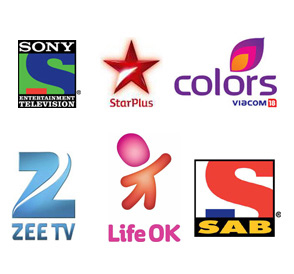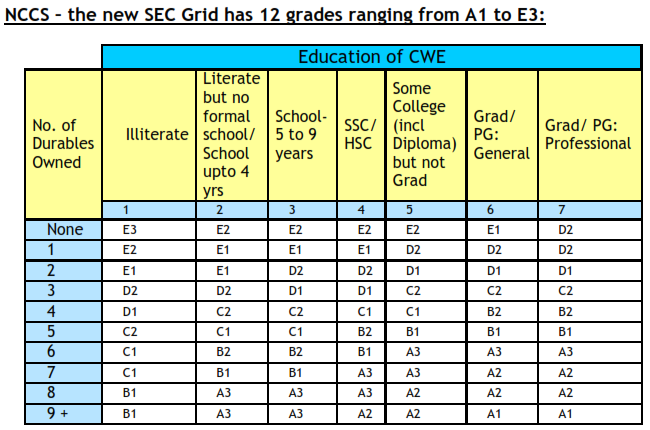
The whole broadcast space in the country is going to witness a major blackout in the coming days; and its not going to be an easy period for all the stakeholders as they too are in the dark as to which ‘currency’ will be detrimental for their viewership fate (simply put – get advertisers thronging to gain eyeballs on a particular channel).
In a recent meeting for all stakeholders representing the major broadcasters, media agencies, and advertisers, BARC (Broadcast Audience Research Council) India showcased actual ratings data. Although the data shown to the gathering of senior industry leaders was household data, the individual data was slated to be rolled out by the end of the month.
According to a recent development, a highly placed source from a leading broadcast network revealed to AnimationXpress.com, “BARC is coming!… all major broadcasters and agencies have already begun unsubscribing from TAM (if they hadn’t already done that). BARC is set to release its first viewership data in the end of April, but this will only consist the viewership numbers of CS4+ households and will only be for the month of April.”
The source further added: “BARC will further work on the age cuts data, but will come out with the consolidated reports only in August. So, if you look at it from our perspective, we are ratings free till the month of August.”
To give some perspective; for the most part (as far as our memory serves us right), the popularity of a TV show was judged on the basis of the Television Rating Points (TRP) it garners (Now called TVT – Television Viewership in Thousands). This data, is compiled by an agency called TAM (Television Audience Measurement) Media Research, which has been the official ratings system in the TV industry for a while. But now, things are set to change.
From April end allegedly, the viewership ratings released by the Broadcast Audience Research Council (BARC) will be considered the official ratings or the standard currency for the industry. While TAM will continue to release data, the Advertising Agencies Association of India (AAAI), The Indian Society of Advertisers (ISA) and the Indian Broadcasting Foundation (IBF) have issued a directive asking all major Indian broadcasters to switch to BARC. However, because BARC is yet to start collecting data to release ratings numbers for the month of April, the TV industry is witnessing a blackout of sorts with regards to the ratings during this phase.
Industry leaders remain optimistic on account of water marking technology used by BARC, a much larger universe of sample size, and usage of technology that significantly cuts down human intervention. Because these were some major causes of concern for all the stakeholders with TAM’s data.
Issues With TAM, leading to formation of BARC

The move to make BARC the official body for being the monitor for the broadcast ecosystem came at a time when there was lot of agitation with regards to the data provided by TAM in India.
In 2012, a news broadcaster (Read: NDTV) challenged the authenticity of TAM ratings in court, which led to the agency’s ratings being boycotted by the industry for nine weeks. Following which a joint broadcasting industry body, BARC (Broadcast Audience Research Council), was formed, and made in charge of coming up with a new audience measurement system for TV.
While TAM has 12,200 Peoplemeters all over India, BARC wants to double the number in the first phase, and continue to increase them in the future. The sampling will be wider as will the variety of categories, thus doing (atleast attempting to) justice to the large unaccounted for viewing that happens in more tier II and III cities going ahead.
Industry’s method in madness
The TAM TV ratings subscription of most of the broadcasters including Star, Sony, Colors, Zee amongst others expired on 31 March, 2015. What’s more, none of these broadcasters have renewed their agreement with the ratings body. The industry bodies that have already ceased using TAM ratings from beginning April are currently facing a ratings blackout period until such time that BARC is available and the data for blackout period will not be available in the future too.
Thus, agencies have decided that old data, i.e. till the month of April, will be made available during the period of the blackout and beyond. And during this blackout phase, historical TAM data will be the benchmark for allocation of media space. All industry bodies – ISA, AAAI and IBF are aligned on this method for ratings in data dark period and it will continue to be the methodology for media planning and buying, in this period of uncertainty as well.

BARC’s NCCS methodology – A Boon!
The New Consumer Classification System (NCCS) or the New SEC System to classify households is the biggest and probably the most necessary change that BARC brings along with itself.
The New SEC System of classification, divides households on the basis of two important variables. One being, education attained by the chief wage earner and the second being, number of consumer durable items owned by the family.
“This is a great move by BARC and will certainly enable media buyers like myself, better understand the market (and standing) for a particular client for whom I will be buying space, across the spectrum,” says an experienced media buyer, on the condition of anonymity.
The IRS has been using this sought of a methodology successfully in the past and BARC adopting this way of better gauging the audience for the broadcast ecosystem in general is a step in the right direction.
There is also another point to note, that BARC’s study which will come out on Wednesdays, unlike the TAM reports that came on Thursdays, will have a different demarcation for the various age bands as well. For kids, the age band will no longer be just 4-14 ages, but split into two – one from ages 4-8 and the other from ages 9-14 – this will lead to better data mining opportunities for everyone. Similarly, there will also be a youth band introduced which will be classified into three sets – ages 15-22; ages 22-30 and finally 30+.
Even as everything is looking great at face value currently, only time will tell if the body made by the industry and of the industry, does really go onto be ‘FOR’ the industry!
